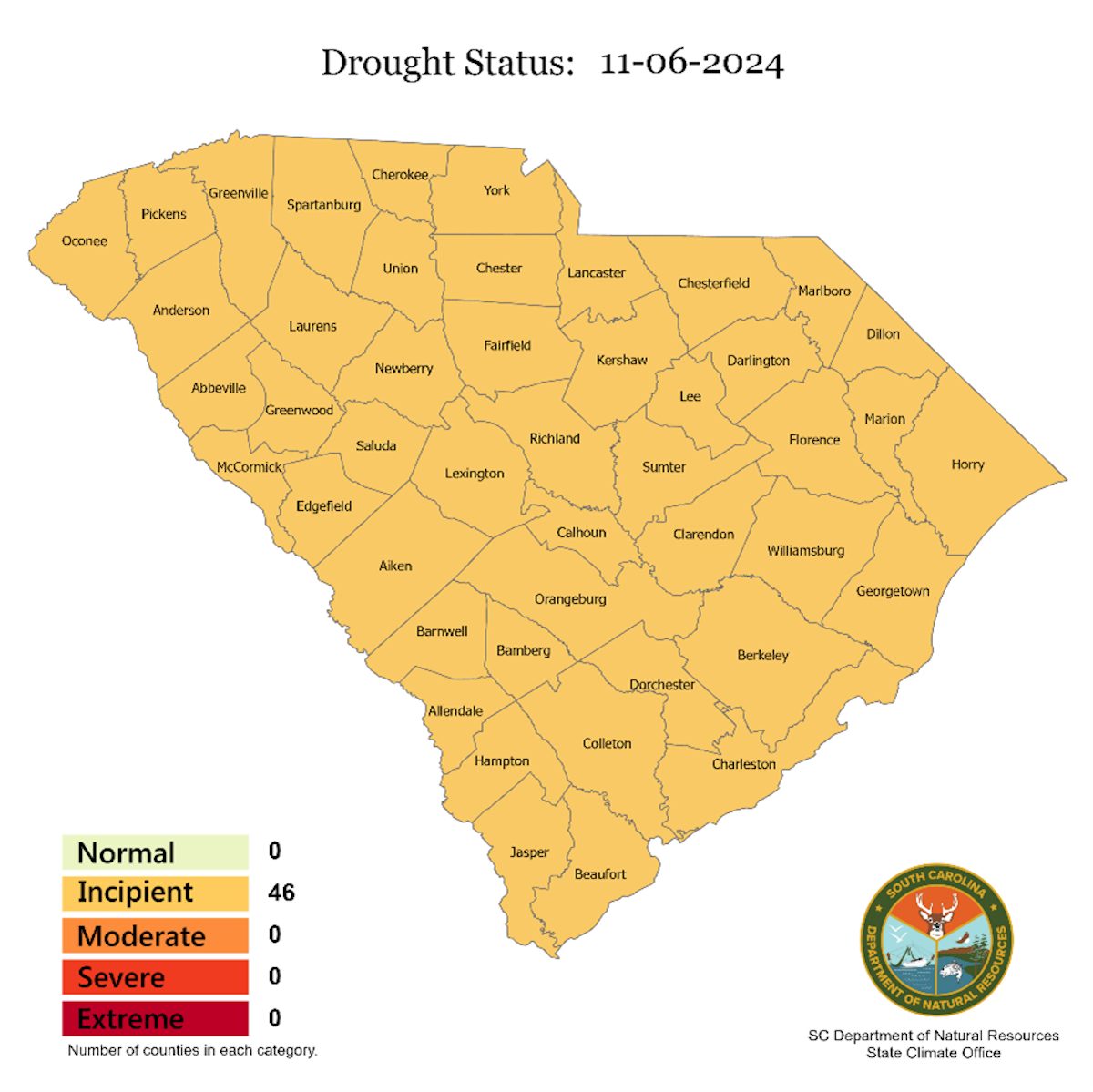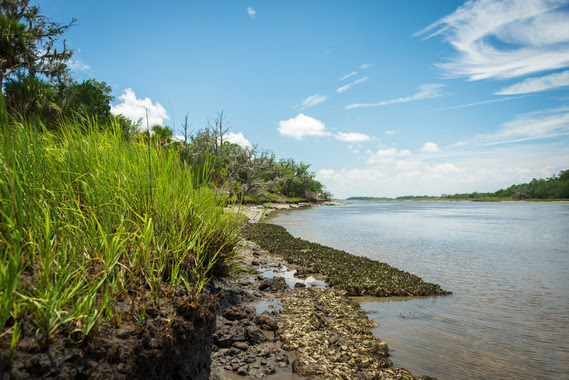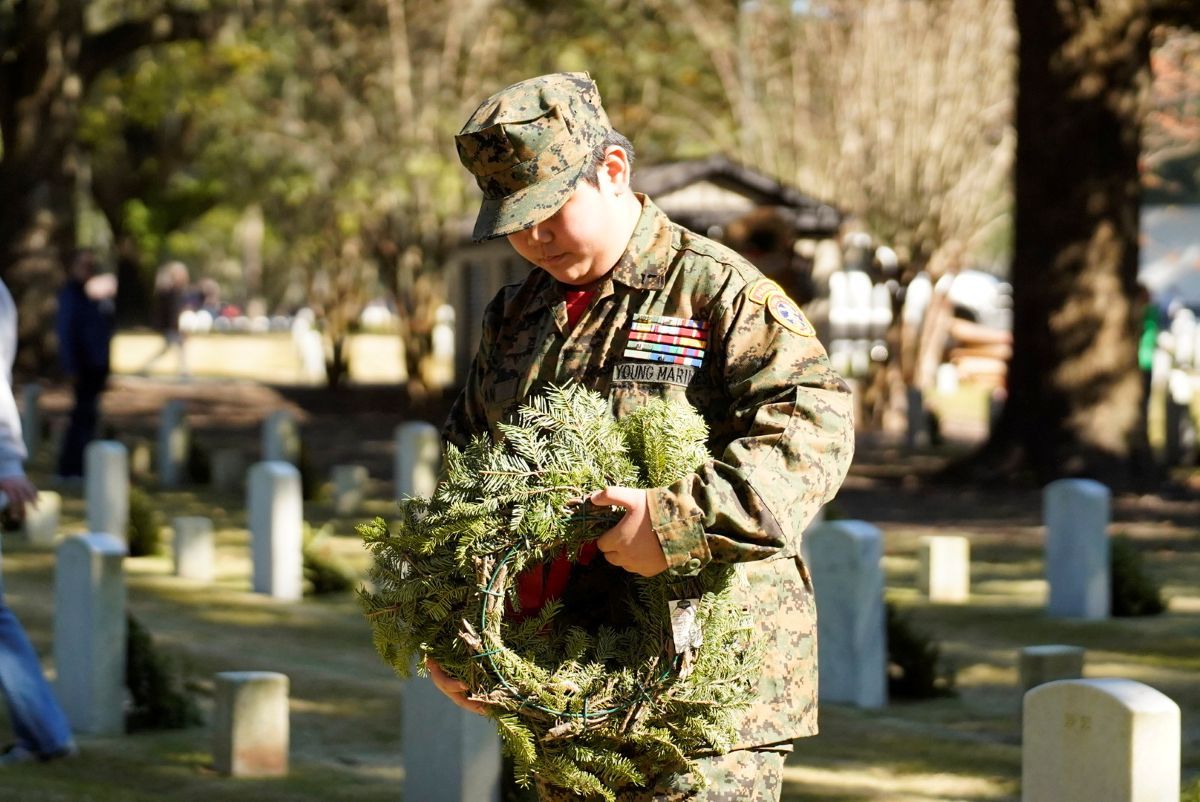S.C. Department of Natural Resources
All of South Carolina is in the initial level of drought after a record-dry October, the S.C. Drought Response Committee decided Wednesday, Nov. 6.
The state was declared drought-free after rain from Tropical Storm Helene at the end of September, but the state has received little to no rain since then. Many stations reported less than .1 inches of rain for the entire month.
The National Weather Service station at Columbia Metropolitan Airport matches its driest October on record, with only a trace of rain, tying 1963 and 2000. The National Weather Service Charleston station received only .03 inches, which ranks as the second driest on record behind 2000, when only a trace was reported.
“We needed a couple of weeks of dry weather after Helene’s heavy rain so that flood waters could subside and agricultural fields could dry out,” State Climatologist Hope Mizell said. “But we didn’t need four weeks of no rain combined with above normal temperatures.”
With rain in the near forecast, the committee considered postponing a vote. Members decided to proceed with the drought declaration, recognizing the impacts of the extended dry period on agriculture and the heighted concern for wildfires.
The S.C. Department of Agriculture explained that growers welcome somewhat dry conditions during harvesting time, which can help avoid heavy equipment being stuck. However, excessive dry conditions can lead to risks that include fire to equipment and crops.
“Grazing animals are suffering in these conditions due to lack of quality forages, and lack of the ability to plant any cool-season forages,” said Agriculture Outreach Director Sam Quinney, with the Department of Agriculture. “With hay crops being affected earlier this year by a flash drought, and now lack of planting abilities for cool-season forages, producers will be forced to sell animals due to the lack of available forages for the winter season. We continue to pray for rain as the ag community not only needs it but relies on it for the future of their operations.”
The long dry period and high temperatures that occurred in October led to dry fuels and made it easier for wildfires to ignite. In October, wildfire occurrence and the total acres burned across the state was higher than the S.C. Forestry Commission’s 10-year average. The Forestry Commission responded to 146 wildfires that burned 518 acres.
“While much of the timber that was damaged as Hurricane Helene moved through the state has not dried out enough to burn, the debris has made it more difficult to access wildfires,” said Forest Protection Chief Darryl Jones, with the Forestry Commission. “The rain we received already this week, along with what is expected in the next few days, will improve conditions in the short term, but the potential for wildfires will increase quickly if we have a few days of higher temperatures without more rainfall.”
The S.C. Department of Environmental Services reported no drinking water supply problems. South Carolina’s reservoirs are near target levels and, while some groundwater levels have lowered slightly, most groundwater levels are in the normal and above normal range in the agency’s monitoring network, according to Alexis Modzelesky, a hydrologist with the Department of Environmental Services. While streamflows are declining, the state is entering a time of year with less demand and lower evaporation, she said.
The committee is hopeful the expected rain will bring much-needed relief without any adverse effects to the state. The next Drought Response Committee meeting is scheduled for Dec. 4.











